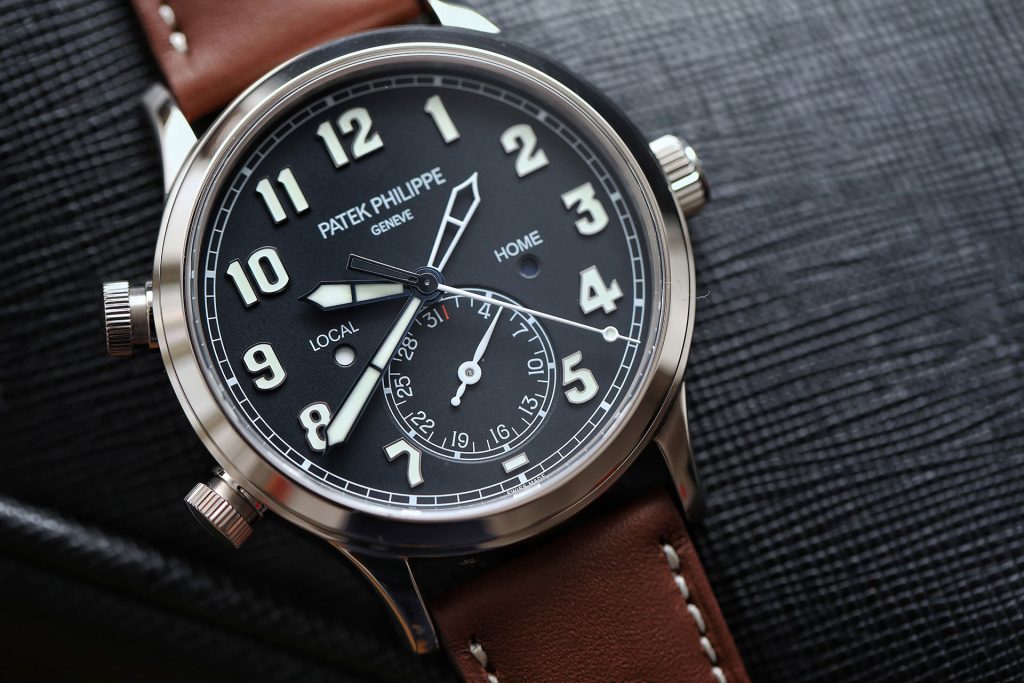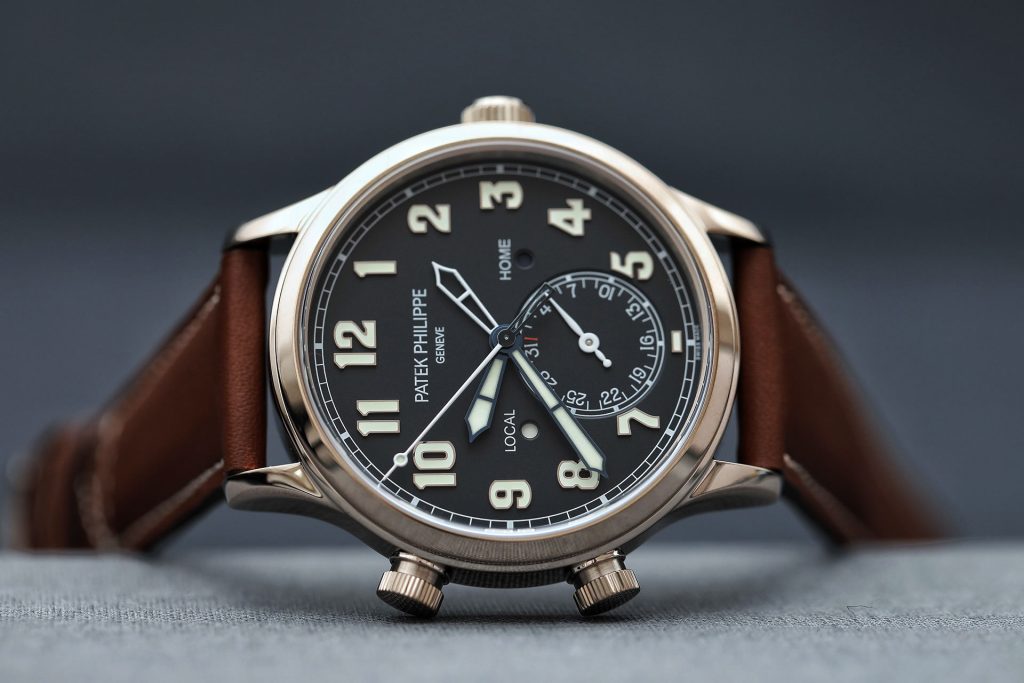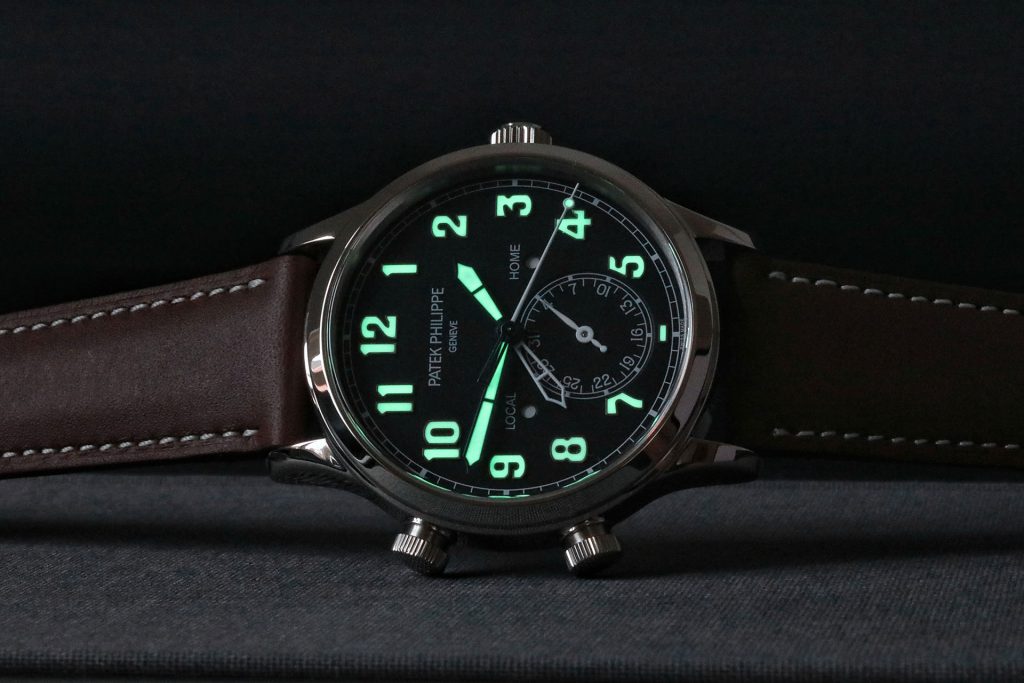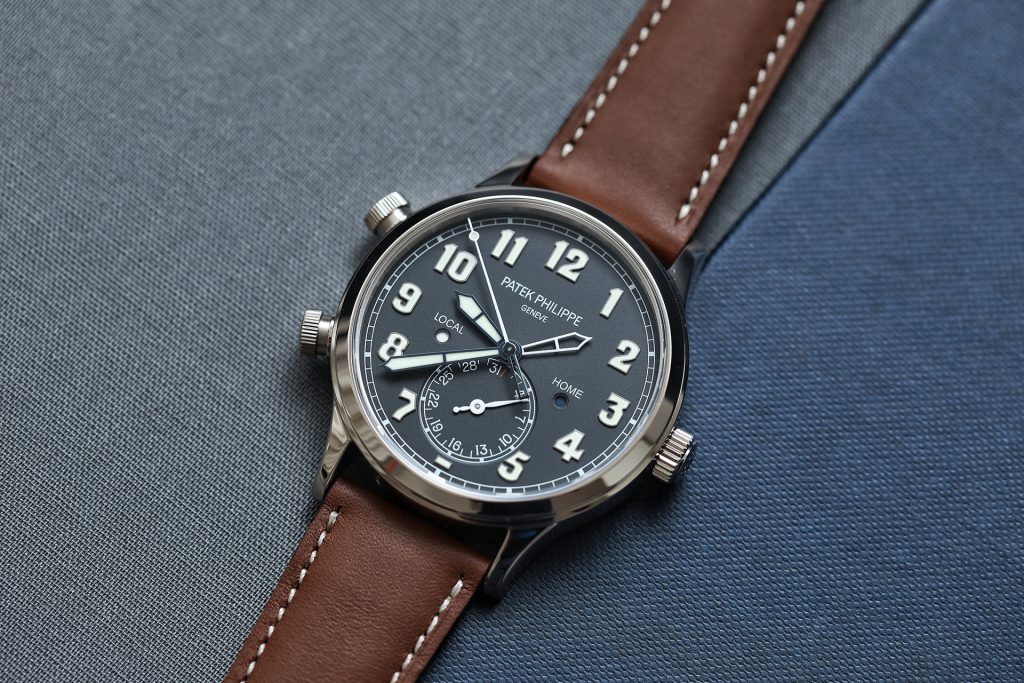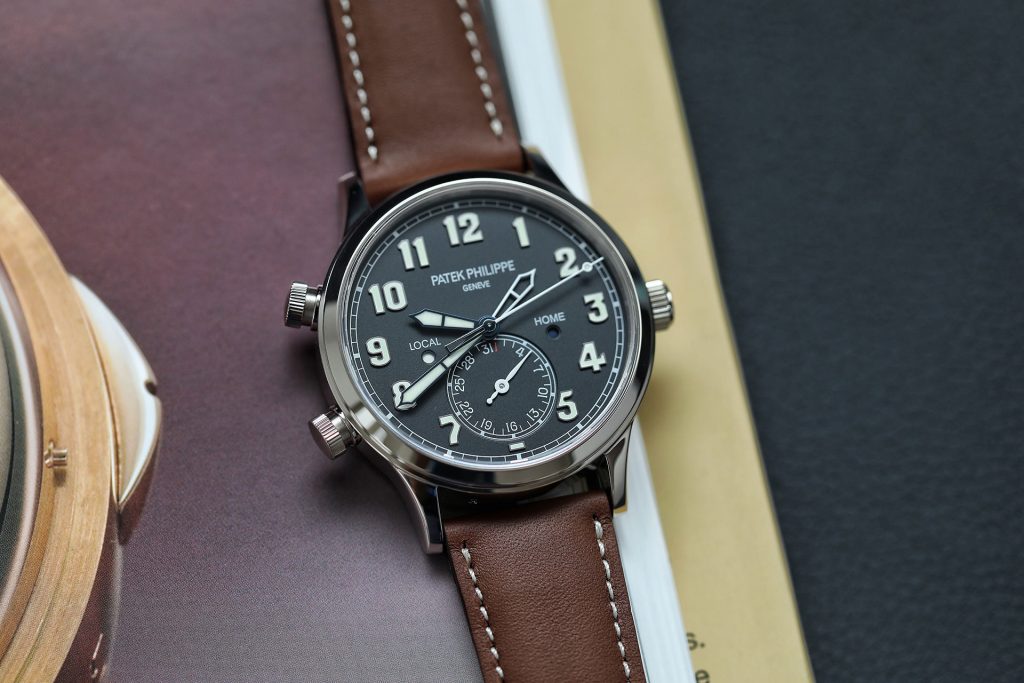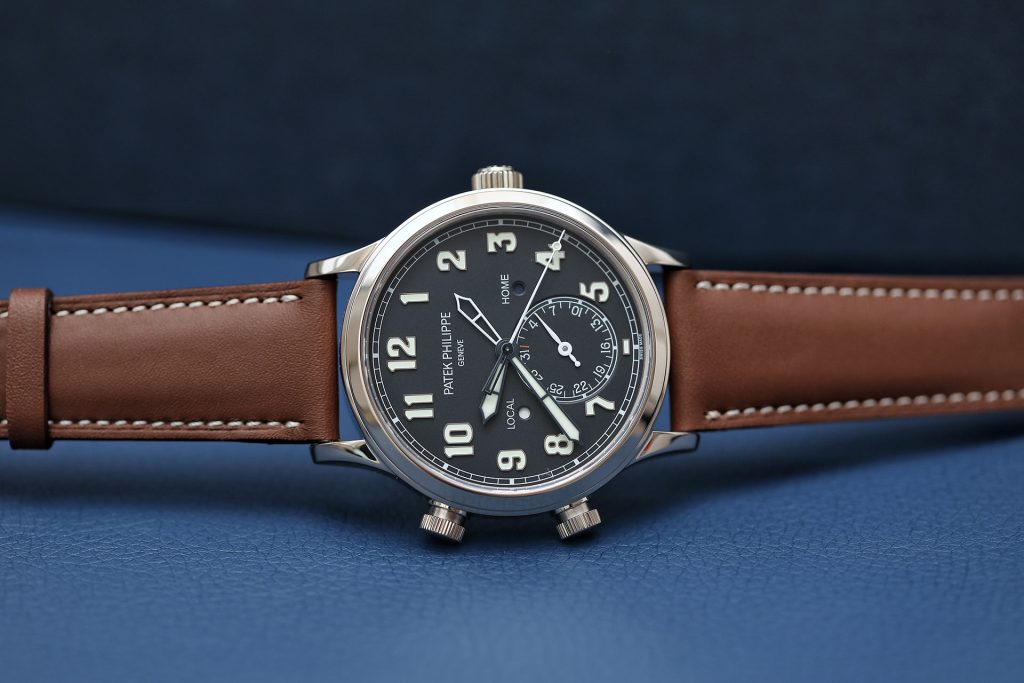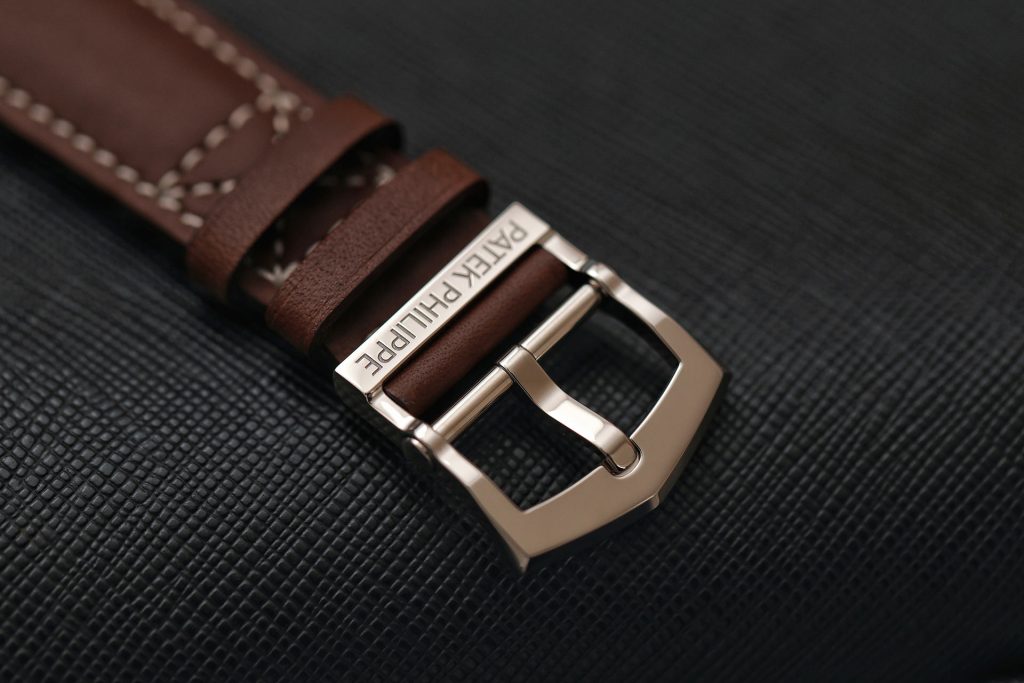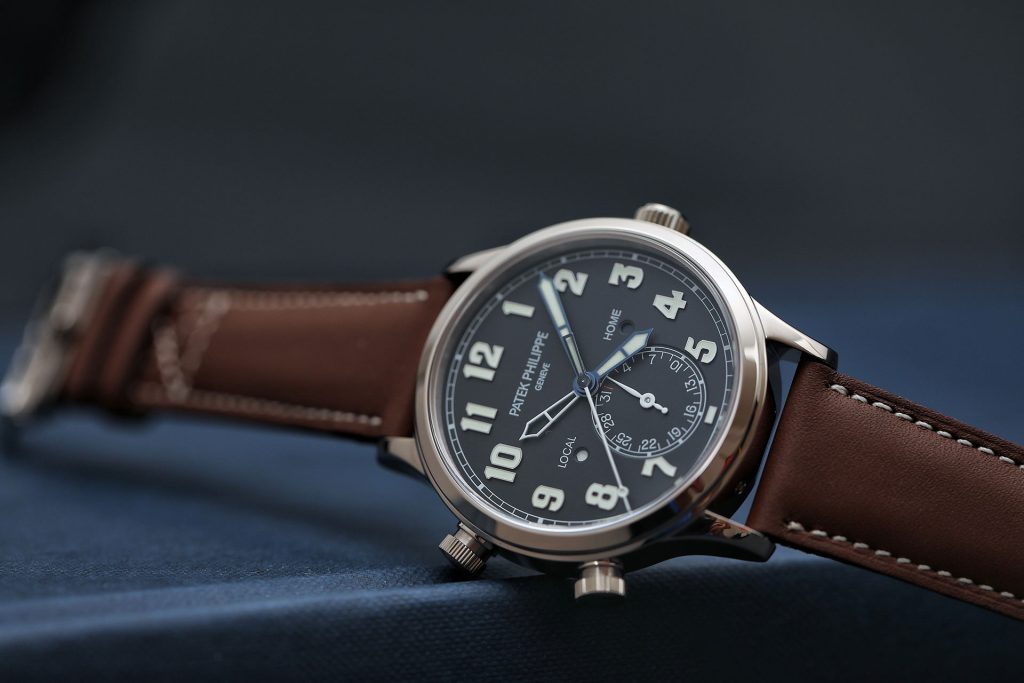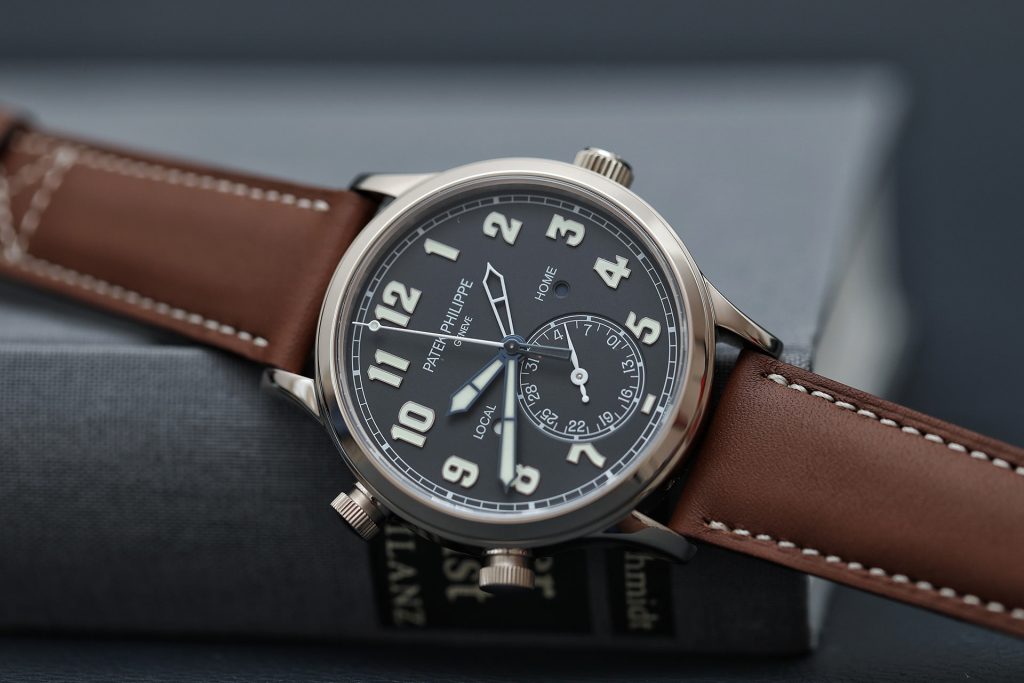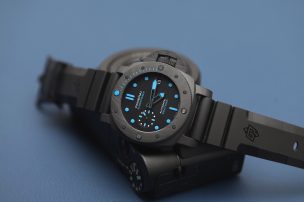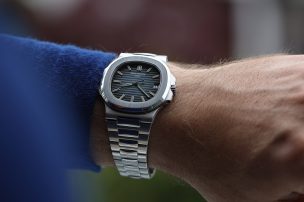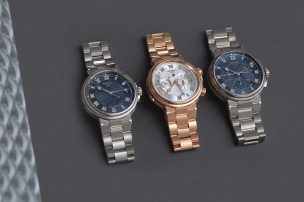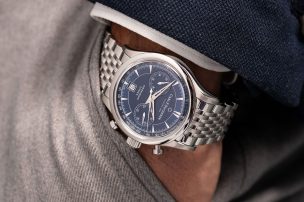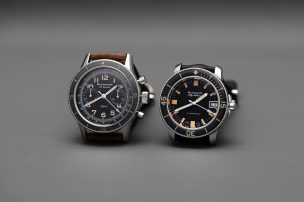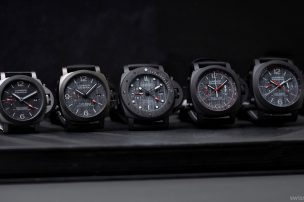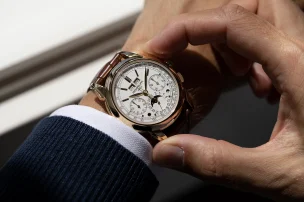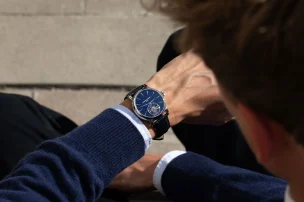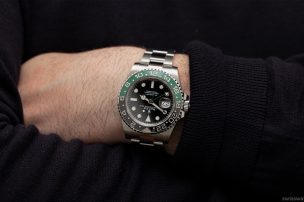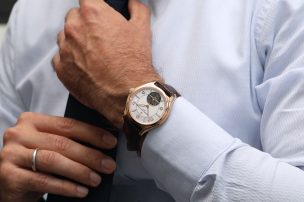
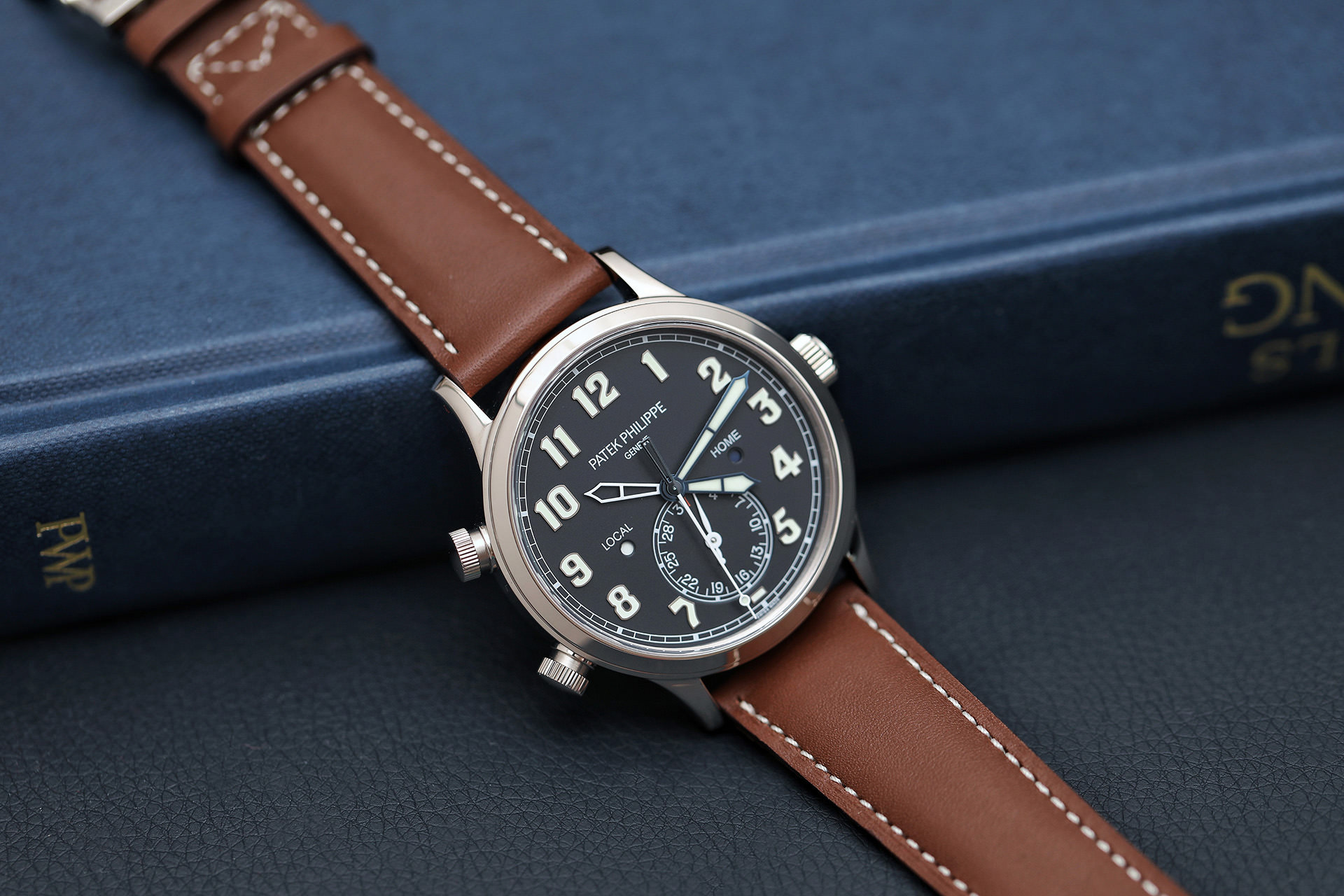
A Pilot Watch for Patek Philippe – Calatrava Pilot Travel Time 5524G
It is such a thing with time. If you would travel through the universe with the speed of light and return to earth after a few years, you would have aged less then the people living on the planet earth. Surely such a flying object is not realistic, but since the rapid development of Aviation in the 1930th, the speed we travel has an impact on time – however you are more likely to have a jetlag then becoming younger, unfortunately.
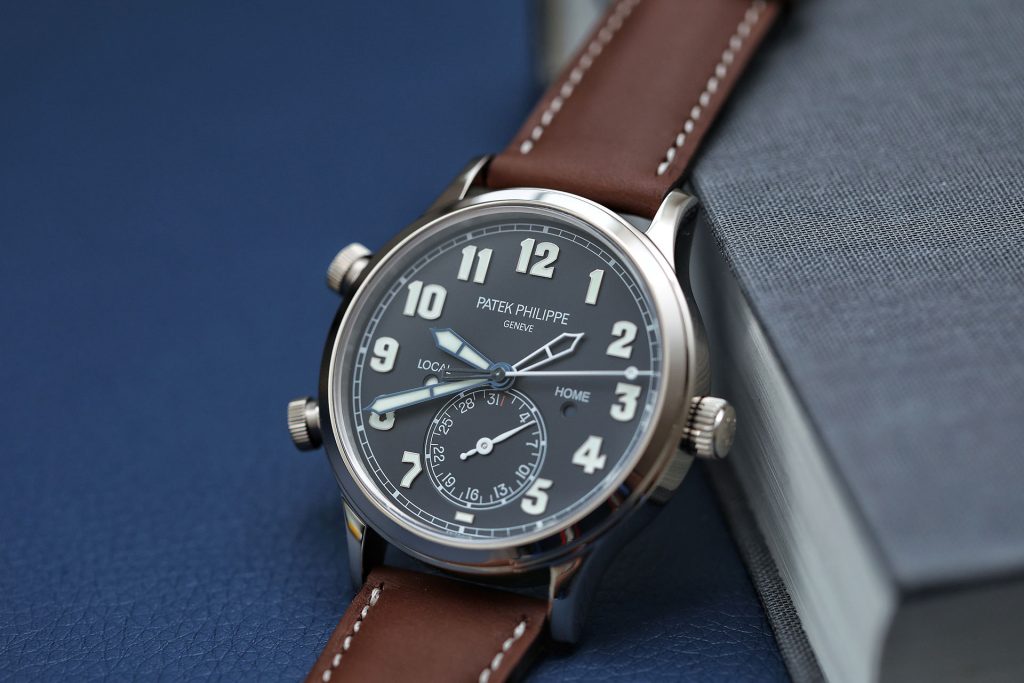
There was also an era of pilot watches at Patek Philippe
At the beginning, board instruments and wristwatches with dedicated mechanism served Pilots for their orientation. There were a few so called hour-angle watches around of which some have been co-developed by pioneer Charles Lindbergh. At some point when GPS navigation took over it became redundant. But Pilot watches never died. Today Pilots and frequent travellers use timezone-watches for their orientation. One of the first watchmakers that developed a mechanism for all 24 worldtime-zones was Louis Cottier in 1931. From this time on Patek Philippe used this function for their Heure Universelle watches and has advanced this complex technique steadily.
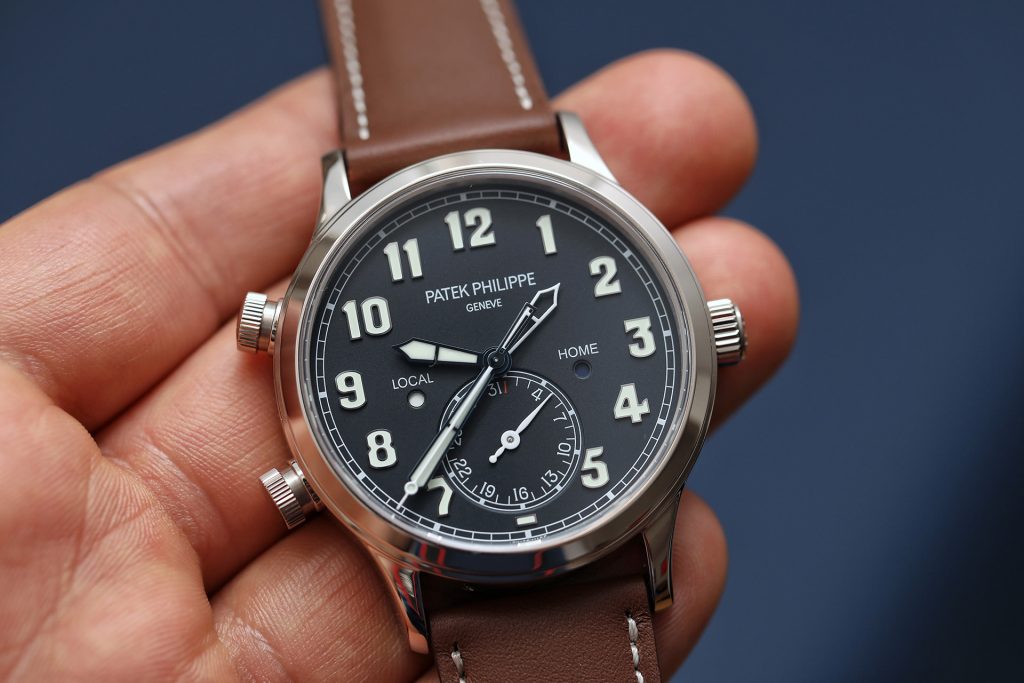
The Patek Philippe Calatrava Pilot Travel Time
In 1959 Patek Philippe patented their first Travel Time mechanism. Another milestone was set in 1996 with a two-timezone-mechanism in which the progress of switching to the second timezone has no impact on the accuracy of the first timezone. As soon as one pusher for the adjustment of the timezone (forward or backward in one-hour increments) is being pressed, an isolator uncouples the time-zone mechanism from the going train. This prevents the degradation of the amplitude of the balance and allows it to continue oscillating at a regular rate.
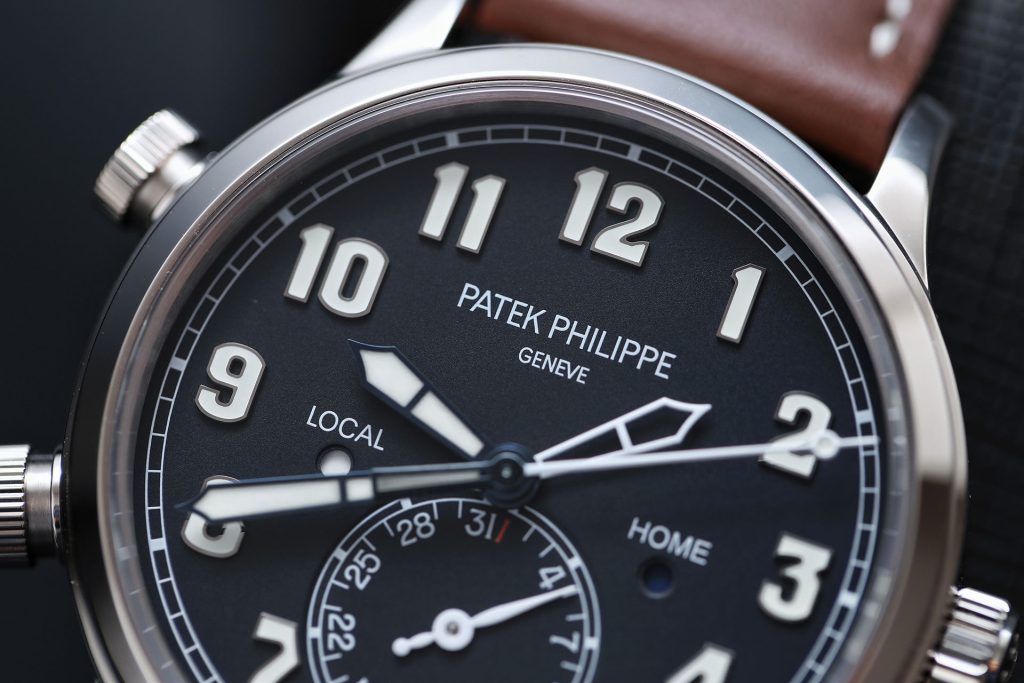
The dark navy blue lacquer on the dial resembles the body paint of American fighter planes from the 1930s
When Patek Philippe introduced the Calatrava Pilot Travel Time 5524G in 2015, it was highly controversial, as a Pilot watch seemed unusual in the manufactures portfolio. But also Patek Philippe developed hour angle watches for the military in the 1930s. However they soon disappeared with the upcoming technological progress (they can still be seen today in the Patek museum). The future worldtime watches remained in peoples memory and are nevertheless modern Pilot watches.
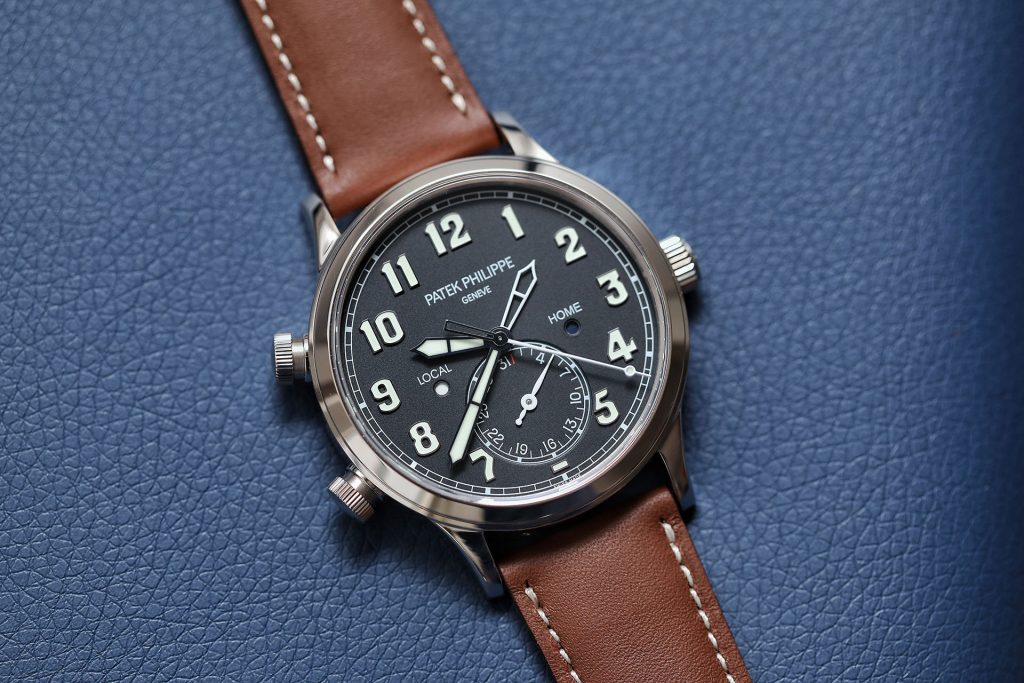
Patek Philippe Calatrava Pilot Travel Time
The Calibre 324 S C FUS from the Reference 5524G is equipped with the 1996 patented two-timezone-mechanism. In the meantime, more details have been added which proof the horological progress: Gyromax-balance with Spiromax-spring made of Silinvar, a light but strong, nearly frictionless, antimagnetic and corrosion-proof material, which improves the effectiveness by around 30 per cent.
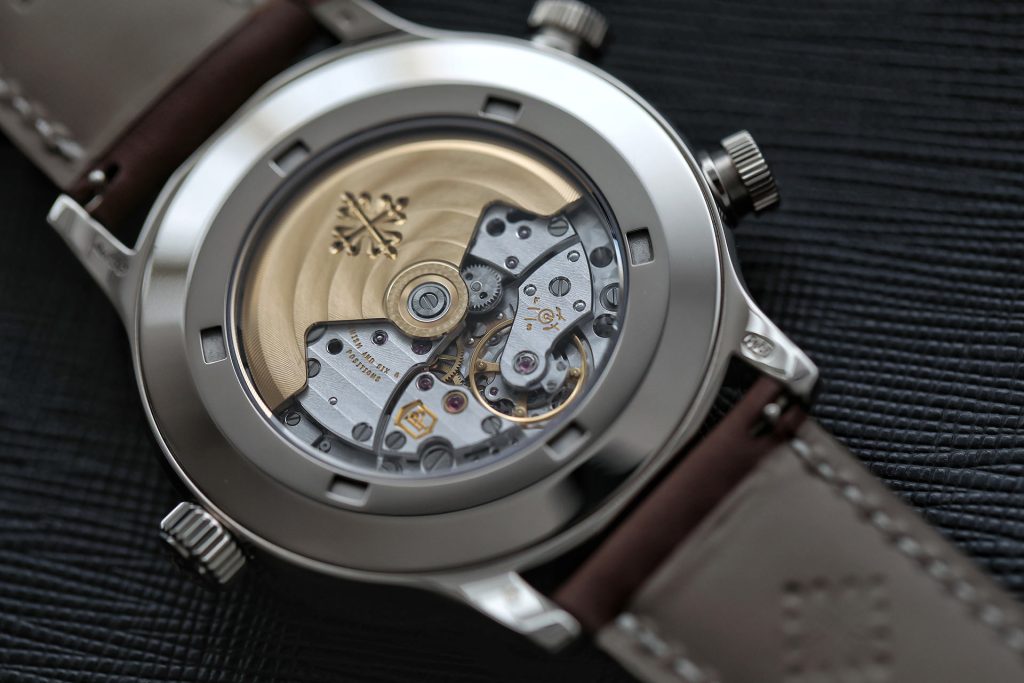
The calibre 324 S C FUS with a two-timezone-mechanism
At Patek Philippe the timezones are divided into local-time and home-time. The local-time hands hides underneath the home-time hands, as longs as not in use. The baton-style steel hands and the numerals have a Superluminova coating, which is very typical for Pilot watches and offers readability in the dark. The dark navy blue lacquer on the dial resembles the body paint of American fighter planes in the 1930s.
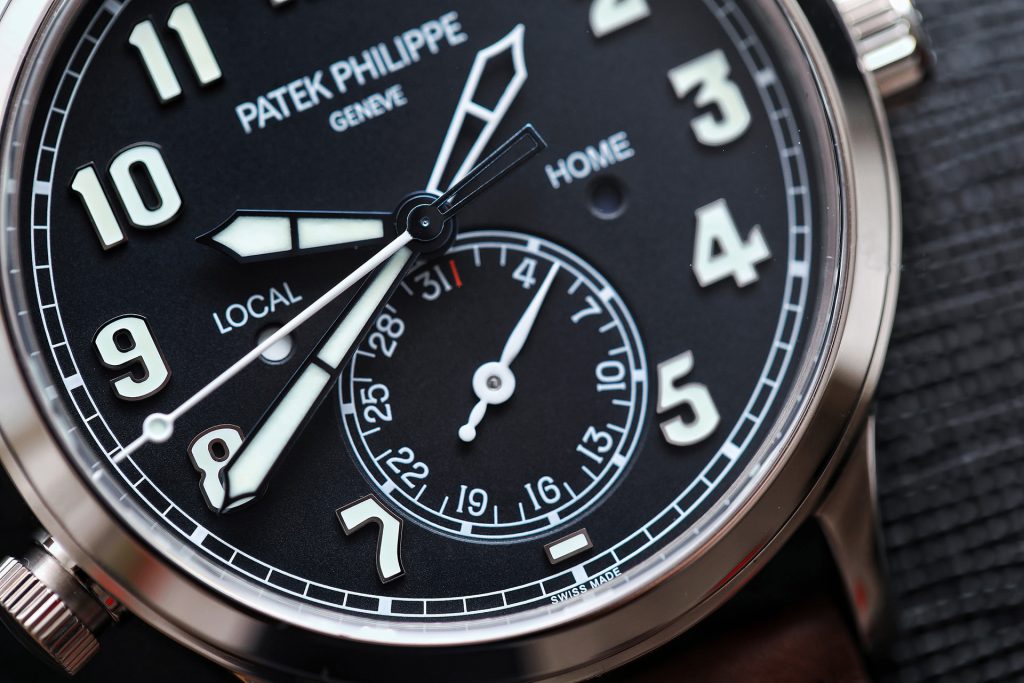
The case is made of whitegold, not stainless steel
The case in white gold is supposed to be in the typical Calatrava style, but it is rather based on classical Pilot watches – little more rustic and square. It has therefore found its place in the collection of the ‘complicated watches’ rather then in the Calatrava collection. Anyway, it remains an exceptional timepiece at Patek Philippe.
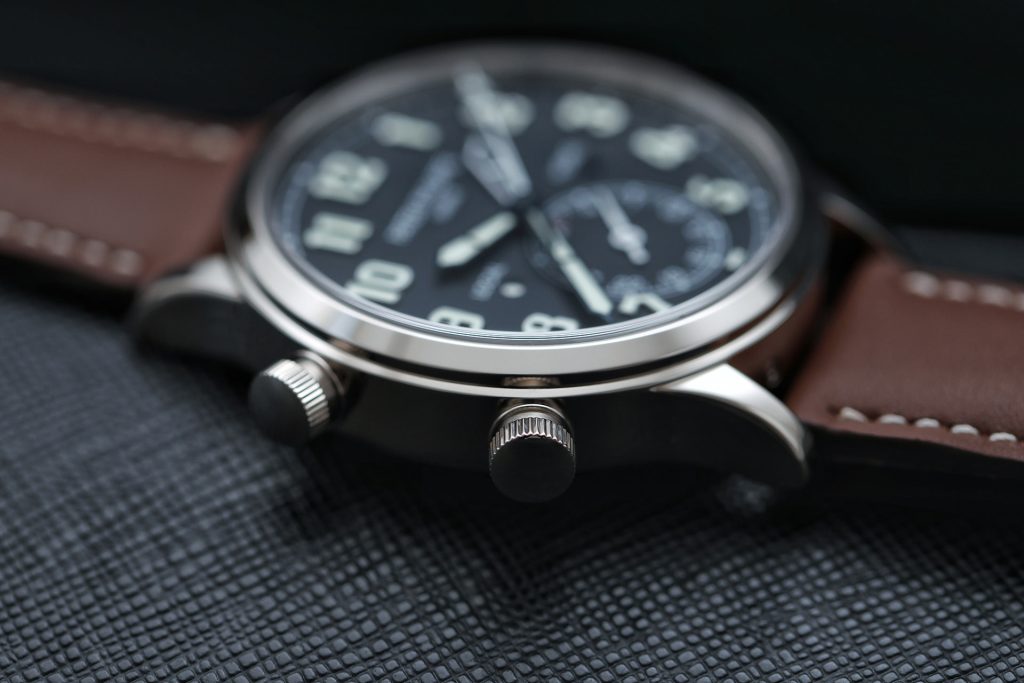
The Calatrava case in the style of classical pilot-watches
By the way, we actually do become little younger when flying, but only one millisecond after 40 years of flying time.
